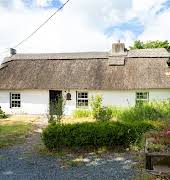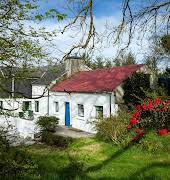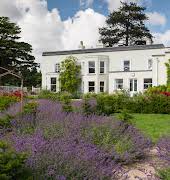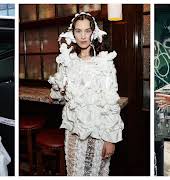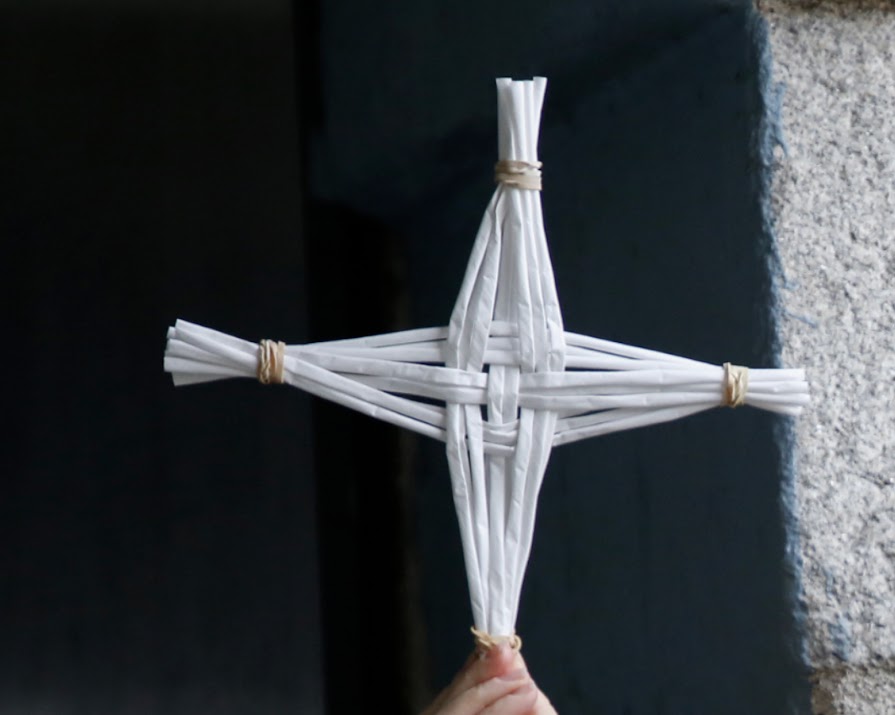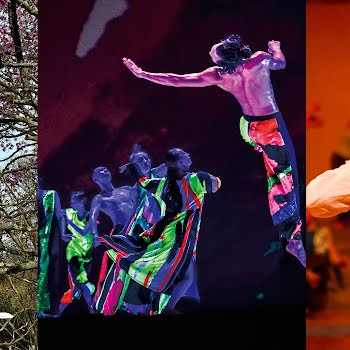
By Amanda Cassidy
01st Feb 2024
01st Feb 2024
With all the snakes and showmanship of some of the Irish saints, it's no wonder Brigid didn't get much of a look in until lately. But as we honour the original feminist with a bank holiday, Amanda Cassidy says it's about time we recognised her status as an inspirational icon.
Last year, in 2023, we celebrated the first Irish public holiday to be named after a woman.
It marked the beginning of spring and the Celtic festival of Imbolc – celebrating St Brigid’s day on February 1st.
In Celtic mythology, Brigid was a triple goddess – of healing, fire, and of poetry – and the Christian saint who took her name, born in 450 AD, carried some of those same associations as the patron saint of poets and midwives. As such, this bank holiday carries a dual opportunity to recognise the role of women through our arts and cultural heritage.
Ok, ok, I am biased. I was born on St Brigid’s day. The Great Spring Arrival, a day of fresh beginnings, the promise of new life and the first hint of brighter days, warmer weather, and the flourishing of hope. What I’m saying is that my birth symbolised the end of darkness. Well, that’s what my mother always told me, anyway.
I was almost a Brigid or Bríde or Breda or Bríd. I attended a St Brigid’s national school, we weaved crosses every year. In first class, we learnt something about a cloak but there was never an emphasis on her work in relation to social justice or women’s rights. Brigid has been always around us, but as some would argue, she has never been properly celebrated for her powerful personality and charitable spirit.
Until now.
Trailblazer
Over the weekend, there is a whole programme of events to mark this occasion. This includes exhibitions at IMMA and the National Museum hosting a variety of events in Brigid’s honour.
There will be a range of community-based events organised by the local authorities as part of their Culture and Creativity Strategies under Creative Ireland in Galway, Kerry, Louth, Offaly, Roscommon, Tipperary and Kildare.
Brigid 1500 is a whole dedicated festival, the programme of which engages with the values St. Brigid championed including faith and spirituality, biodiversity and sustainability, arts and culture, social justice, peace, hospitality and education. The series of events and initiatives include festivals, concerts, talks, art commissions, illuminations, pilgrimages, and craft workshops as well as a school programme to cement St. Brigid’s lasting legacy.
There’s also Brigit: Dublin City Celebrating Women, which will honour the spirit and legacy of the Celtic goddess with walking tours, fairs, performances and workshops, amplifying the voices of all who embody the spirit of Brigid.
Women’s rights
Brigid’s legend provides more interesting opportunities for commemoration than just weaving. She’s recently been referred to as a “badass” with some accusing the church of “hijacking” her into the church fold.
But though critical of some church practices, Brigid, the first female patron saint of Ireland, was extremely devout.
So who was she really?
This was a woman who set up monasteries around the country with Kildare the focal point. There was also a hospital, a farm and schools that included women. While some of the information on Brigid is patchy, a book dedicated to her life was written by journalist Una O’Hagan and her late husband Colm Keane.
“As Abbess of Kildare, she managed up to 15,000 nuns. She was ordained bishop. She liberated Irish women from roles as slaves or bondswomen. She was a master brewer of ale, a farmer managing monastery farms, with a particular grá for sheep. She held more power in the Catholic church than any woman before or since,” explains O’Hagan.
Brigid lived in the 5th century. It’s believed she was born in County Louth, Ireland, and was the daughter of a pagan chieftain and a Christian slave woman. She was raised as a Christian and was known for her compassionate nature and her love for the poor and suffering.
Outspoken
Her monastic community in Kildare became one of the most important religious centres in Ireland. It was a hub of spiritual and cultural life for many centuries. St. Brigid was known for her miracles and her visions. She was said to have healing powers and to have received revelations from God on a regular basis.
Her writings and teachings reveal her deep devotion to God and her belief in the importance of a life of prayer and contemplation.
But Brigid was also an important figure in Irish social and political life. She was a powerful advocate for women’s rights and was known for her independence and her courage.
Power
The Cloak of St. Brigid, for example, is a traditional Irish mantle that is said to have been woven by St. Brigid herself. According to legend, the cloak was made from rushes and was used to cover the poor and the sick. St. Brigid would lay the cloak on the ground and, as she prayed, it would grow in size until it covered everyone who was present.
Today, the cloak is a powerful symbol of Irish heritage and is used to signify protection, comfort, and hope. It is often depicted in art and is a popular subject for stories and legends in Ireland.
Superstitions
St. Brigid’s Day was also associated with a number of fire festivals, such as lighting the “need fire” to drive away evil spirits or to ensure good health and fertility.
She was also seen as a powerful protectress and was often associated with domestic arts, such as spinning, weaving, and dairy work. Many believed that she could help with these tasks and bless them with good fortune. In some areas, Brigid was also associated with certain water sources, such as wells or springs, which were believed to have special healing powers.
Fortune
Here in Ireland, we love a good superstition. For my grandmother, it was never throwing the bathwater out after dark. For others, it was customary to leave doors open on February 1st (Brigid’s feast day) to allow her to enter homes and bless them.
This was believed to bring good luck, health, and prosperity to the household for the coming year. This may have also come from pagan celebrations as fire was seen as a symbol of purification and renewal.
Social justice
Brigid may have been one of the first female leaders in our country. She was known for speaking out about issues of justice and oppression, especially as they affected the poor and marginalised members of society.
She was a powerful advocate for the rights of the poor and the oppressed, and she was not afraid to speak out against injustice and inequality, even in the face of opposition.
She was particularly vocal against the mistreatment of women, especially widows and orphans, who were often vulnerable to abuse and neglect. She also advocated for the rights of the poor and the marginalised, and she worked to ensure that they had access to the basic necessities of life, such as food, shelter, and medical care.
Through her teachings, her writings, and her actions, St. Brigid sought to promote a world that was more just, more equitable, and more compassionate.
In this way, St. Brigid was a powerful voice for justice and equality, and she continues to inspire people to this day to work towards a more just and equitable world.
Her legacy and her impact on Irish culture and spirituality are a testament to her courage, her compassion, and her unwavering commitment to doing what is right.
Resistance
But it wasn’t all plain sailing. Her outspokenness and her commitment to justice and equality challenged the status quo and went against the cultural norms of her time.
As a woman in a male-dominated society, St. Brigid faced significant barriers in her advocacy for justice and equality, and many men were resistant to her message and her activism. Nevertheless, she continued to speak out and to advocate for the rights of the marginalised, despite the opposition she faced.
In addition to resistance from men, St. Brigid also faced opposition from those in positions of power and authority, who saw her activism as a threat to their control and influence. Despite these challenges, however, she remained steadfast in her commitment to justice and equality.
Legacy
Though some would also say that the church effectively “hijacked” Brigid’s memory. The process of canonisation and the development of the cult of saints was complex and influenced by many different factors. The church had significant political power during the Middle Ages, and it sometimes used the cult of saints to further its own political goals.
Nevertheless, her legacy as a powerful advocate for social justice continues to inspire people to this day. Brigid’s teachings and her writings continue to be widely studied and revered.
This bank holiday, it’s hoped that Brigid’s Day can be used as a springboard to celebrate and specifically highlight the themes of women, nature, mythology and female trailblazers.
Images via gov.ie
A version of this article was originally published in 2023.



